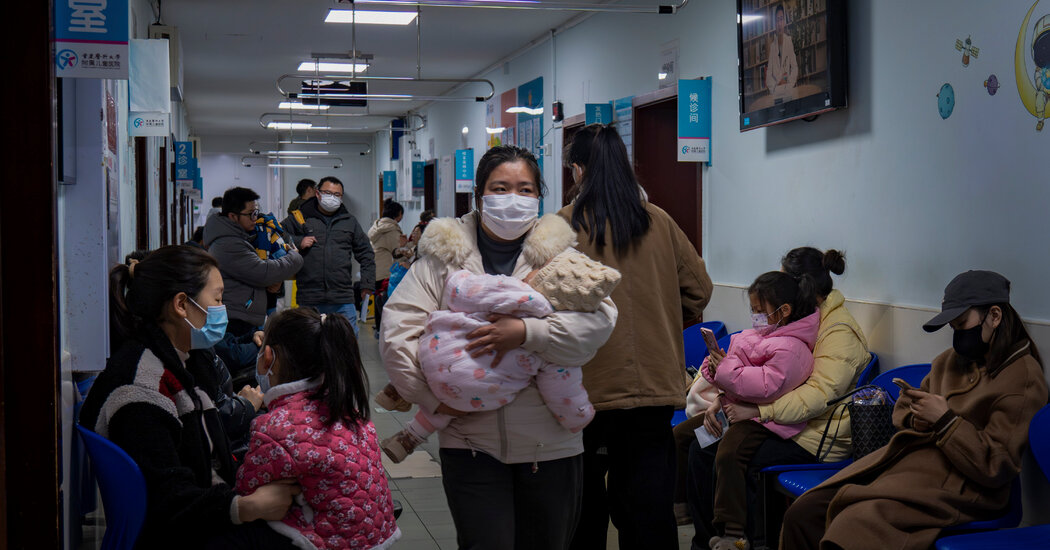Breaking News
China’s Population Declines for 3rd Straight Year

China has made various attempts to increase its population, including declaring having babies as an act of patriotism. However, despite these efforts, the country’s population has continued to decline for the third consecutive year. Even with a slight increase in the number of births in 2024, the overall trend of an aging and shrinking population remains unchanged.
The declining birthrate in China is causing significant economic challenges, leading to the closure of obstetrics units in hospitals, idle baby formula factories, and a decline in kindergarten enrollments. This demographic shift is impacting various sectors of the economy, with thousands of preschool teachers losing their jobs.
To address this issue, the government is offering incentives such as tax benefits, cheaper housing, and cash rewards to encourage people to have more children. Companies are also getting involved by providing financial incentives to their employees for having children.
Despite a slight increase in the number of births in 2024, China’s population continued to shrink for the third consecutive year. The country is facing a long-term decline in its childbearing population, with young people showing reluctance to have children.
The government has acknowledged the demographic challenges and has implemented measures to monitor population changes at the local level. Companies are also playing a role in incentivizing employees to have more children.
The lack of babies in China is contributing to economic difficulties, particularly in the pension and healthcare systems. The aging population is straining these systems, and the country’s economic growth is being impacted.
To address the declining birthrate, the government is offering various incentives and benefits to encourage people to have more children. Companies are also stepping in to provide financial support to employees who choose to expand their families.
China’s declining birthrate is a result of various factors, including economic challenges and societal changes. The country’s population is shrinking at a faster rate than expected, posing significant challenges for the future.
The government has implemented measures to address these challenges, including gradually increasing the retirement age to support the aging population. However, the impact of these changes may take time to manifest.
China’s birth restrictions were loosened in 2015 to allow families to have two children, leading to a temporary baby boom. However, the trend did not last, and birth rates started declining again.
Despite efforts to encourage more births, China’s fertility rate remains low, posing challenges for the country’s future population growth. Many young Chinese people are hesitant to have children due to various factors such as education costs and caregiving responsibilities.
Women in China are particularly hesitant to have children due to societal and economic factors. The empowerment of women in recent years has led to a shift in attitudes towards marriage and childbearing.
The declining birthrate in China is impacting various sectors, including healthcare and consumer markets. Companies are adapting to these changes by shifting their focus to products for older adults and adult nutrition.
The strain on China’s healthcare system is evident, with closures of hospitals and maternal health clinics. The impact of the declining birthrate is being felt across the country.
The decrease in births in China is affecting maternity hospitals and healthcare providers, leading to job losses and financial difficulties. The challenges posed by the declining birthrate are becoming more pronounced in the healthcare sector.
-

 Destination8 months ago
Destination8 months agoSingapore Airlines CEO set to join board of Air India, BA News, BA
-

 Breaking News9 months ago
Breaking News9 months agoCroatia to reintroduce compulsory military draft as regional tensions soar
-

 Tech News11 months ago
Tech News11 months agoBangladeshi police agents accused of selling citizens’ personal information on Telegram
-

 Breaking News9 months ago
Breaking News9 months agoBangladesh crisis: Refaat Ahmed sworn in as Bangladesh’s new chief justice
-

 Productivity11 months ago
Productivity11 months agoHow Your Contact Center Can Become A Customer Engagement Center
-

 Toys11 months ago
Toys11 months ago15 of the Best Trike & Tricycles Mums Recommend
-

 Guides & Tips9 months ago
Guides & Tips9 months agoHave Unlimited Korean Food at MANY Unlimited Topokki!
-

 Gadgets3 months ago
Gadgets3 months agoSupernatural Season 16 Revival News, Cast, Plot and Release Date























